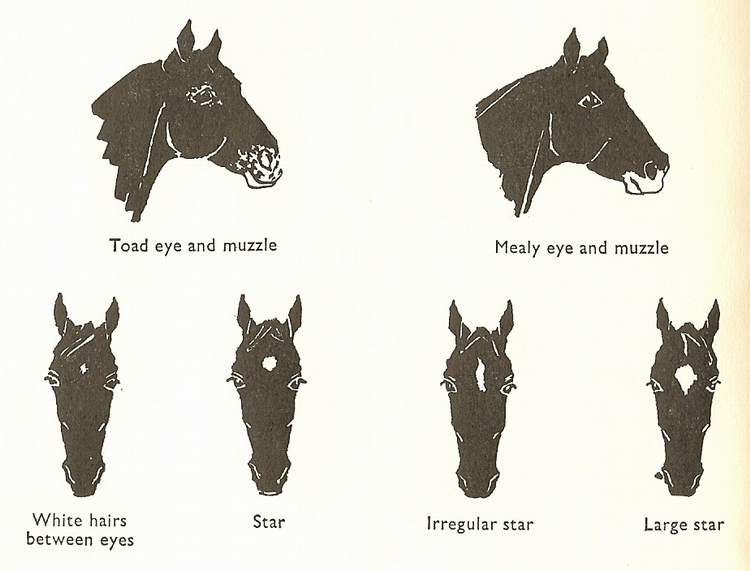
Colors and Markings
____________________________________________________________________________________
The following are face and leg markings, as shown in The Young Specialist Looks At Horses. I would like to eventually have color pictures of at least the first two, and maybe more, but have not gone looking for them yet. Also bearing in mind this book was published in England, some of the terms may be different from here in the United States.

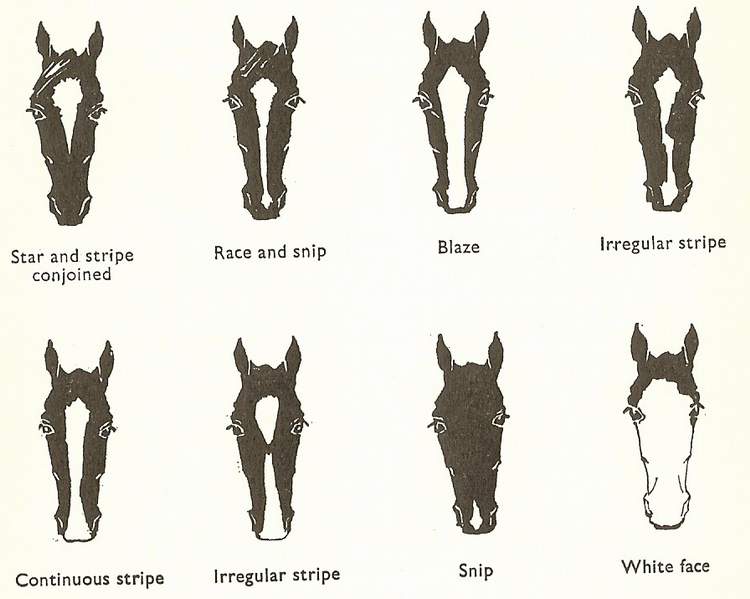
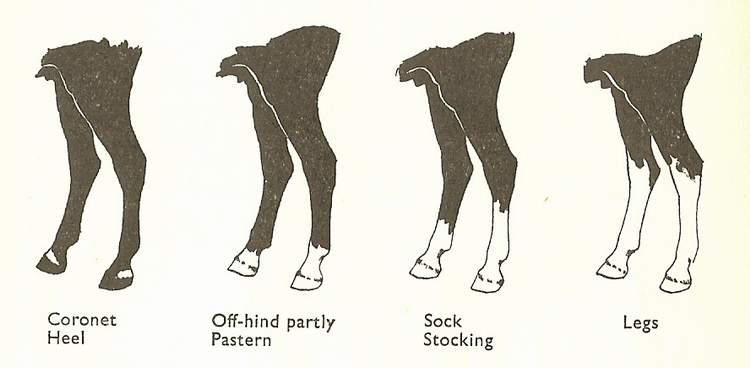
____________________________________________________________________________________
The following pictures and diagrams were found on the website for the Arabian Horse Association: http://www.arabianhorses.org/default2.asp. I hope to have more extensive diagrams in time, but these do apply to all breeds.
____________________________________________________________________________________

____________________________________________________________________________________

____________________________________________________________________________________
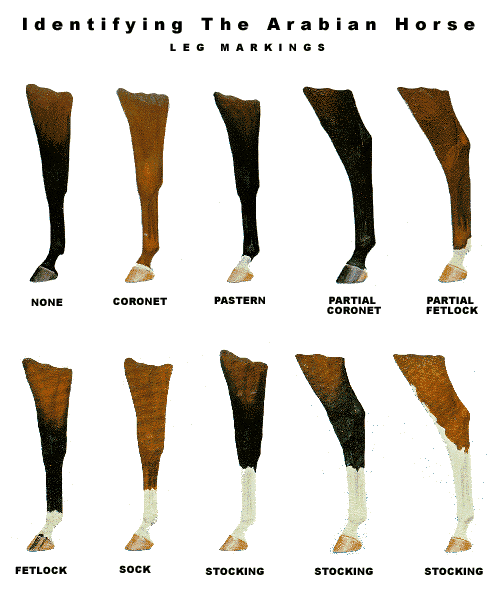
____________________________________________________________________________________
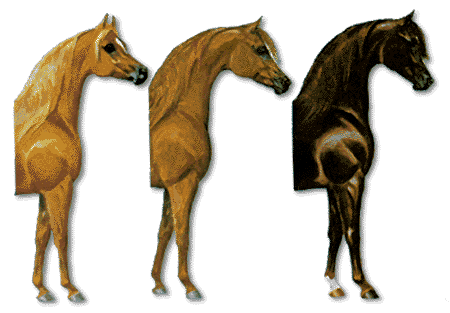
Chestnuts are a copper color, varying in shades from a light golden-red to a dark brown, known as "liver chestnut."
Occasionally, a chestnut will have a "flaxen," or blonde, mane and tail. Sometimes, the mane and tail will be a mixture of blonde and chestnut hairs or brown and chestnut hairs. Quite often, the mane and tail will be the same color as the body coat.
____________________________________________________________________________________
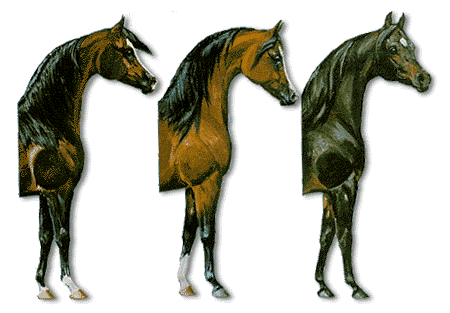
Bay horses come in a variety of reddish-brown hues, and are distinguished by black points (mane, tail, legs, ears, knees, hocks, or any combination thereof). If there are white markings on the legs, there will usually be black above the markings.
Light bay horses may seem to resemble chestnuts in some cases, but the distinguishing difference will be the presence of black points.
____________________________________________________________________________________

A grey horse's coat color is a mixture of white and dark hairs growing out of dark skin. Rarely is any foal born as a distinctly recognizable grey. They are usually born chestnut or bay, and within weeks will begin showing signs of grey around the eyes, flank, and below the elbow. Occasionally, grey splotches will develop on the body, croup, or thigh before they are visible around the eyes.
During the greying process, a horse may show varying shades of grey. Some may appear steel grey, a mixture of black and white hairs. Others may be rose grey, a mixture of chestnut and white hairs, or bay grey, a mixture of bay and white hairs. Dappling is common. As grey horses age, their coat colors lighten, sometimes appearing to be white. Oftentimes, older grey horses grow tufts of reddish brown hair. This coloring is called "flea-bitten."
____________________________________________________________________________________
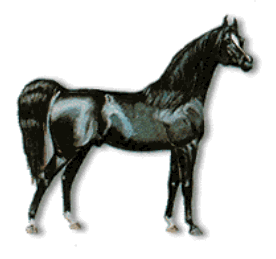
The entire coat, including the muzzle, flanks, and legs, must be black with the exception of white markings. If any doubt arises between black and dark bay, black can be determined by noting the fine black hair on the muzzle.
____________________________________________________________________________________
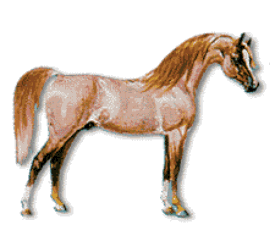
A roan is defined for registration purposes as a horse with about a fifty-fifty mixture of white hairs with either chestnut, bay, or black hairs throughout the body. Often, the mixture is white and chestnut, creating the "strawberry roan."
It may be difficult to tell the difference between a rose grey and a roan at first. Roans show their permanent coat color after shedding their foal coats. Unlike greys, they do not dapple nor do they progressively lighten in color. Most roans will have a dark head, while grey foals will first turn light on the head.
____________________________________________________________________________________
For more information about the different colors and the genetics involved, check out: http://www.equinecolor.com/